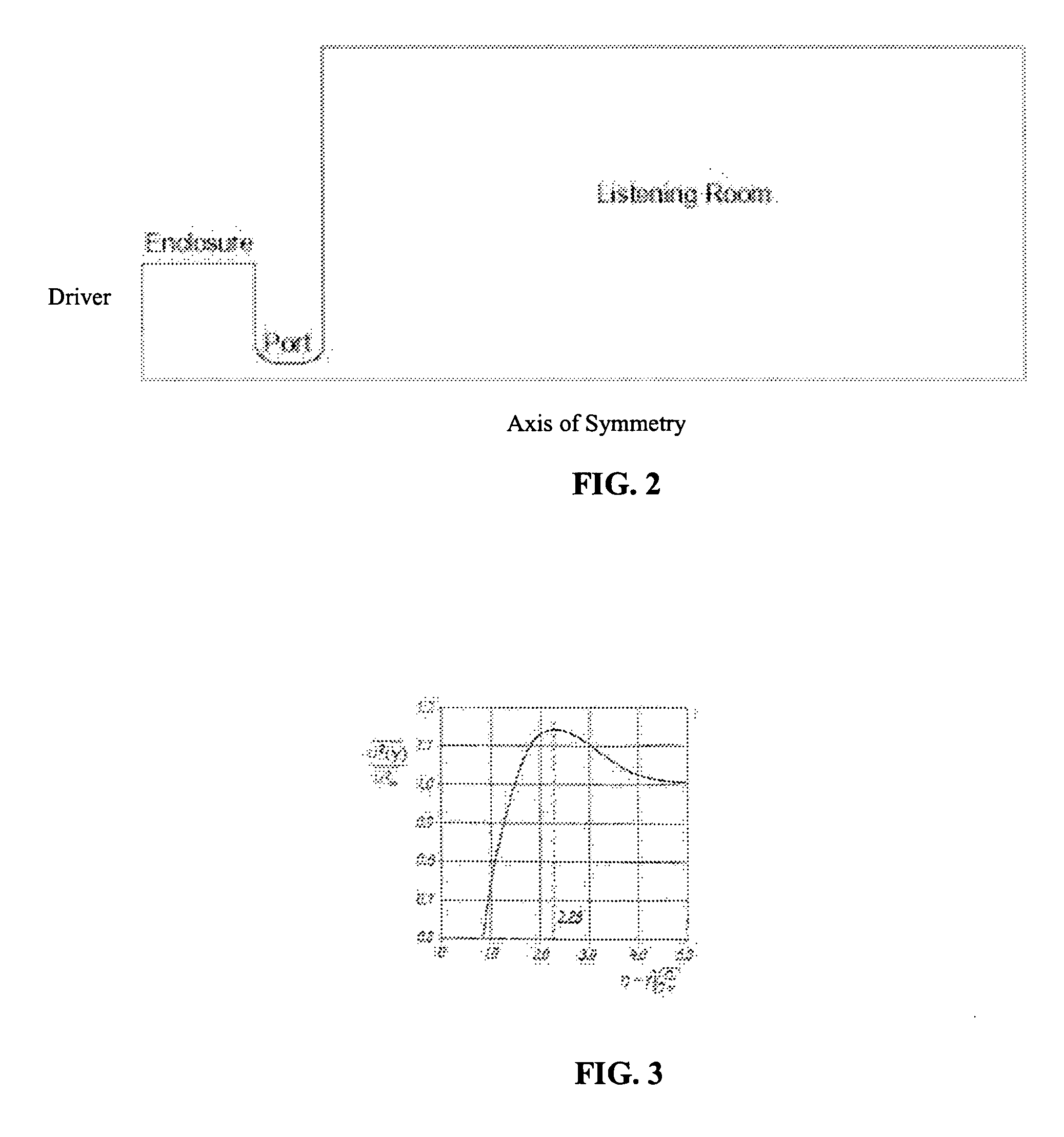Method for predicting loudspeaker port performance and optimizing loudspeaker port designs utilizing bi-directional fluid flow principles
a loudspeaker port and fluid flow technology, applied in the field of loudspeaker ports, can solve the problems of distortion, noise and compression, and inability to find the optimal solution, and achieve the effect of optimizing the port design
- Summary
- Abstract
- Description
- Claims
- Application Information
AI Technical Summary
Benefits of technology
Problems solved by technology
Method used
Image
Examples
Embodiment Construction
[0040] Turning now to FIGS. 1-15, a method is provided for predicting the performance of a loudspeaker port and optimizing port design. According to one example of one implementation, the method involves defining the port geometries, modeling the bi-directional fluid flow in the defined port utilizing a modeling method known as Computation Fluid Dynamics (“CFD”) and analyzing the port model based to determine whether the flow characteristic displayed in the model representing optimum flow characteristic of port performance. To optimize port design, the geometries of port may be continuously altered and modeled until the flow characteristic represents flow indicative of optimum port performance.
[0041] As set forth above, the geometry of the port must first be determined. Although the method can be utilized in connection with a single loudspeaker port design, by way of example, the analysis and modeling of four different port designs are illustrated in FIGS. 1-15. Although the port a...
PUM
 Login to View More
Login to View More Abstract
Description
Claims
Application Information
 Login to View More
Login to View More - R&D
- Intellectual Property
- Life Sciences
- Materials
- Tech Scout
- Unparalleled Data Quality
- Higher Quality Content
- 60% Fewer Hallucinations
Browse by: Latest US Patents, China's latest patents, Technical Efficacy Thesaurus, Application Domain, Technology Topic, Popular Technical Reports.
© 2025 PatSnap. All rights reserved.Legal|Privacy policy|Modern Slavery Act Transparency Statement|Sitemap|About US| Contact US: help@patsnap.com



